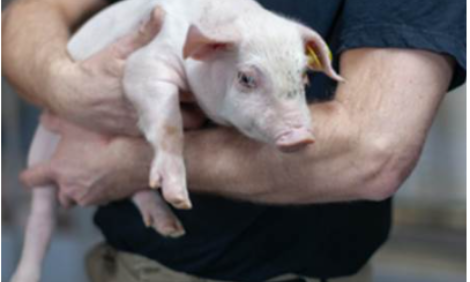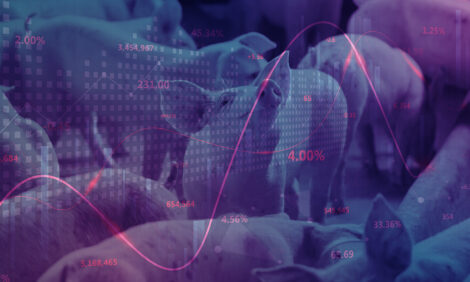



Risk Factors for African Swine Fever on Nigerian Pig Farms
African swine fever (ASF) is one of the major setbacks to development of the pig industry in Nigeria. This study by Emmanuel Jolaoluwa Awosanya and colleagues aimed to improve understanding of the risk factors for ASF infection in Nigerian pig herds.ASF is a highly contagious and fatal viral disease of pigs caused by a DNA virus of the Asfarviridae family.
It is a trans-boundary animal disease, defined as a disease of significant economic, trade and/or food security importance for a considerable number of countries, which can easily spread across national borders and reach epidemic proportions and for which control and management, including exclusion, require international co-operation.
Globally, the ASF virus is present in Africa, Italy (Sardinia), Georgia, Latvia, Poland, Ukraine, Russia (Moscow) and some Caribbean countries, with an increasing risk of spreading to ASF-free countries in Europe and America.
African swine fever is the main threat to the pig industry in Africa because of the heavy losses incurred by pig farmers when it strikes, with mortality approaching 100 per cent.
Three epidemiological cycles have been recognized: the sylvatic, domestic, and sylvatic and domestic cycle. In Africa, all three have been reported; however, in Nigeria only the domestic cycle which maintains the ASF virus within domestic pigs is most recognised and reported despite reports on detection of ASF virus in river hogs.
In Nigeria, the first ASF outbreak was reported in 1973 and subsequently in 1997, 1998 and 2001. Since the outbreak in 1997, there have been reported confirmed and unconfirmed sporadic outbreaks of ASF. African swine fever is enzootic in Nigeria.
The pig industry in Nigeria can be classified into small holder farms - farms having fewer than 50 pigs in the herd at any point in time; medium holder farms - farms having from 50 to 100 pigs in the herd at any point in time and large holder farms - farms with over 100 pigs in the herd at any point in time.
The pig farming industry in Nigeria has its largest presence in the southwest of Nigeria, with fewer high pig density areas in other geo-political zones in the country.
Farming activities occur throughout the whole year with increased activities during festive periods in December. The pig production system in south west Nigeria is predominantly confined within pig pens.
The ASF scourge has however adversely affected the bustling and rising activities in this industry since the outbreak in 1997. Efforts have been made by the various state governments through farm extension services in educating the farmers on biosecurity measures since that outbreak.
Several researchers have made efforts in contributing to the understanding of the dynamics of transmission, control and what will hopefully lead to its eventual eradication in Nigeria.
Economic losses to farmers consequent to ASF scourge, molecular epidemiological descriptions of the circulating strain of ASF virus in Nigeria, surveillance of the ASF virus in both domestic and wild pig populations especially during the periods of outbreaks, geographical and spatial spread of the ASF infection and identification of risk factors during ASF outbreaks at farm level have all been reported on.
Prior to this study, there had been a 5-year gap (2007–2012) between the last sero-monitoring of the ASF virus in south west Nigeria.
Previous work on assessment of risk factors considered outbreak situations; however, ASF has assumed a new enzootic status, with the implication of this being that most infected farms are at subclinical level. Thus, factors responsible for the enzootic status of ASF in Nigeria are poorly understood.
The current study therefore attempted to address the above identified gaps of ASF herd level sero-status and unknown risk factors for ASF sero-positivity in an enzootic situation, by assessing the current sero-status of pigs among herd ASF sero-prevalence and their associated factors in south west Nigeria.
Study findings indicated that ASF herd level sero-prevalence in southwest Nigeria was higher in pig herds with an external source of replacement stock than an internal source. It was also higher in the dry season than in the rainy season.
The effect of season when the samples were taken on ASF seropositivity was modified by herd size.
The observed increase in ASF risk in the rainy season with increasing herd size, in pig herds with an external source of replacement, and observed decrease in ASF risk in the dry season with increasing herd size in pig herds with an internal source of replacement suggest that large herds are at greater risk of ASF infection via introduction of an asymptomatic pig, than through other indirect means such as fomites, movement of vehicles and personnel.
The authors recommended strict compliance with biosecurity measures, especially using an internal source of replacement stock and measures that minimise movement on pig farms.
The associations between ASF herd level sero-prevalence and source of replacement stock, and the effect of herd size on ASF prevalence under different seasons, have implications for the understanding of ASF transmission and its application in disease modelling.
It could also have implications for development of a suitable control and eradication strategy for ASF in Nigeria. The role of ticks either on pigs or in pens in the enzootic status of ASF in Nigeria will be an area for further investigation.








